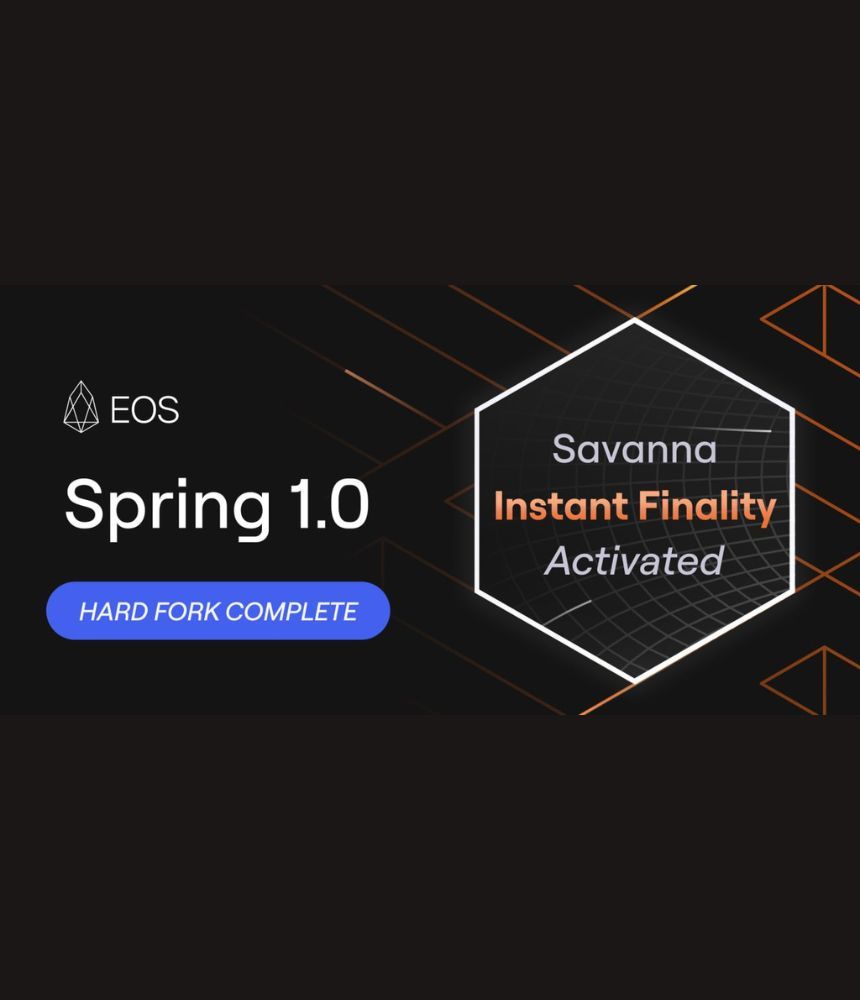
EOS has successfully upgraded its network to Spring 1.0, introducing a host of performance enhancements and new capabilities. Chief among these is greater performance, reliability, and speed delivered thanks to the new Savanna consensus algorithm. The successful deployment of Spring 1.0 and the improved benchmarks it brings should support new use cases on EOS while enhancing user and developer experience.
EOS Blooms as Spring Goes Live
On September 25, EOS completed its hard fork which saw the network upgrade to Spring 1.0. Such upgrades are typically only attempted once in a blockchain’s lifetime due to the widespread coordination that an event of this nature requires. EOS required the support of numerous exchanges where its token is traded including Binance to ensure the event passed smoothly. CEXs typically suspend deposits and withdrawals around the time of a hard fork in case of technical issues.
In the event, the hard fork passed without incident, implementing Spring 1.0 and the new Savanna consensus. Prior to the event, there was a month-long grace period for EOS nodes to upgrade to support Savanna. There was also extensive testing required ahead of the upgrade which required the input of BPs (block producers).
From the perspective of EOS users, the hard fork required no action: it was simply a case of waiting it out until it was confirmed that Spring 1.0 had been deployed without incident. BPs and node operators, however, had to get hands on to ensure that a majority of infrastructure supporters were running Spring-compatible clients.
Introducing Instant Finality
One of the biggest benefits engendered by Spring 1.0 – or Antelope Spring 1.0 to give the upgrade its full title – is instant finality. This reduces transaction finality time by 100x and supports one-second confirmation times. Other improvements Spring brings include enhanced cryptography through support for aggregate BLS signatures. This will enable the EOS network to support more complex cryptographic operations.
The final key benefit Spring 1.0 introduces is a shakeup of the role played by Block Producers. It enables Block Proposers and Block Finalizers to be ushered in. While it remains to be seen whether this comes to pass, the tech is at least now in place for this to happen. If the EOS community decides to press ahead with this change, it has the potential to deliver greater network security and decentralization since it will reduce the power placed in the hands of individual BPs.
Following the successful hard fork, EOS Network Foundation CTO Bart Wyatt said: “With the Spring 1.0 upgrade and the introduction of the Savanna consensus algorithm, we’re achieving something rare in the blockchain world: changing our core consensus algorithm. Very few Layer 1 blockchains have ever done this. I can think of only a handful—Ethereum being the most well known…By bringing EOS to an industry-leading 1-second finality, we’ve taken a massive leap forward, placing EOS at the forefront of blockchain innovation. This isn’t just a technical achievement—it’s about the EOS community taking full ownership.”
Disclaimer: This article is provided for informational purposes only. It is not offered or intended to be used as legal, tax, investment, financial, or other advice.

